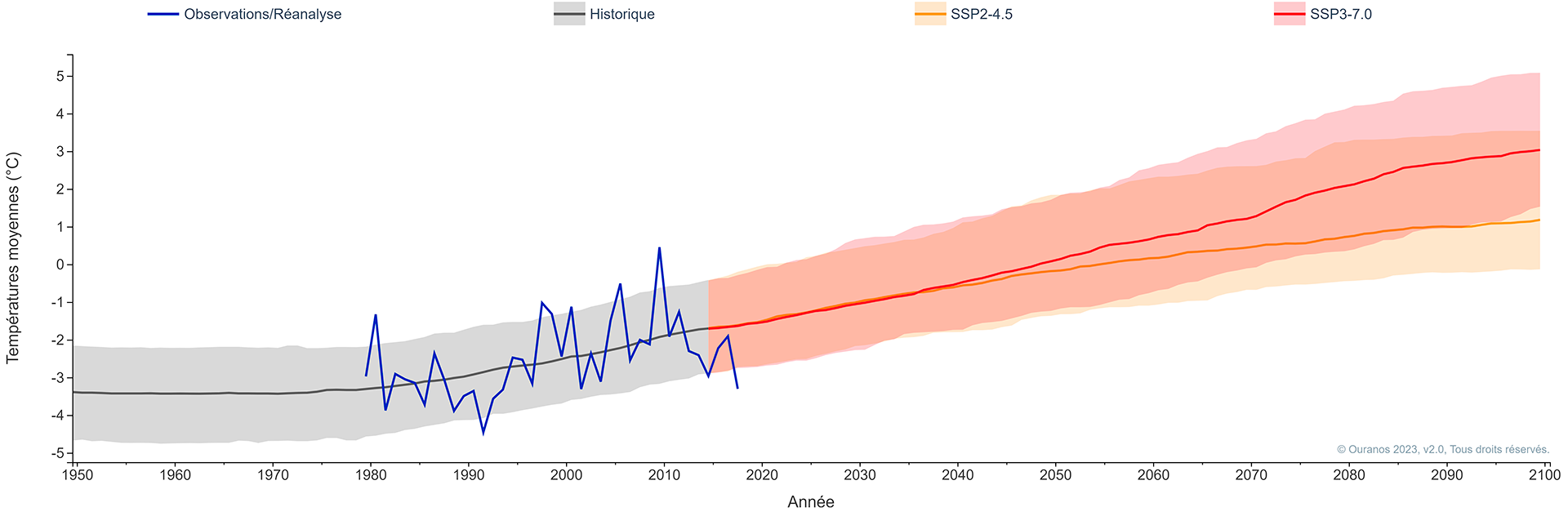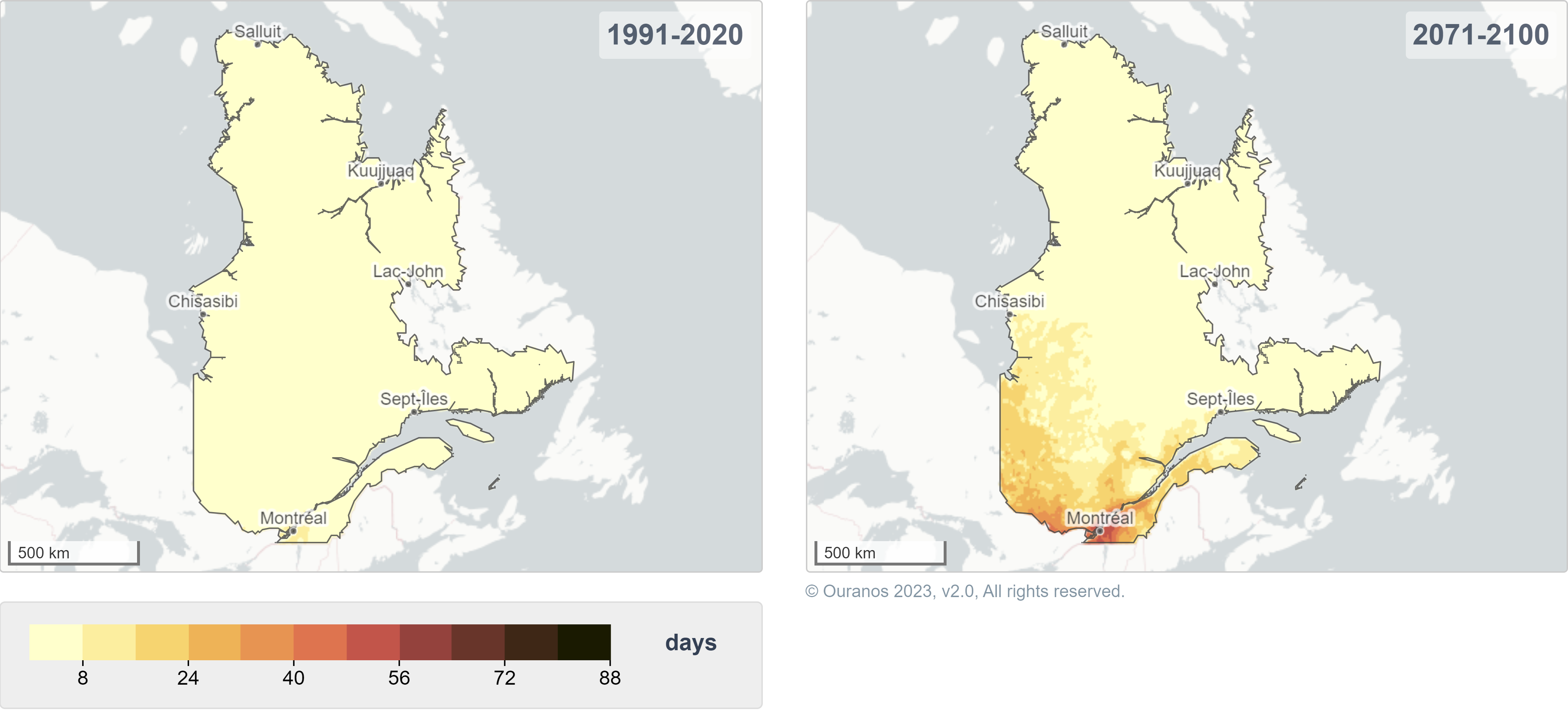Temperatures
Significant temperature increases throughout Quebec are expected until the end of the century (Figure 1). It can be seen that for the next 30 years, the temperature increases are similar, regardless of the greenhouse gas emissions scenario (GHG). However, around the 2050s, global warming will slow if society succeeds in limiting its GHG emissions; otherwise, it will accelerate. There is clear urgency to act, both to reduce GHG emissions in order to stabilize the climate and to adapt to the inevitable changes.
Several temperature-related climate indicators are available on:

Figure 1 : Average annual temperatures throughout Quebec from 1950 to 2100. The SSP2-4.5 is a moderate GHG emissions scenario, the SSP3-7.0 is a high scenario. Taken from the Ouranos Climate Portraits based on CMIP6.
Tout comme pour les tendances observées, les modèles climatiques projettent des différences selon les régions avec notamment un réchauffement plus marqué dans le Nord que dans le Sud du Québec.
With a high emissions scenario
In the north, the projections show average annual temperature increases of 2 to 4°C for 2050 and of 4 to 8°C for 2080.
In the south, they show average annual temperature increases of 2 to 3°C for 2050 and 4 to 6°C for 2080.
*Anticipated changes are relative to the historical reference period of 1991–2020.
Summer temperatures
In the summer, the increase in temperatures will result, in particular, in more frequent heat waves, especially towards the south of the province, which is consistent with various studies, including those of the Intergovernmental Panel on Climate Change (Figure 2). For example, in Outaouais, while the maximum regional temperature exceeded 30°C about 3 days per year during the last few decades, it could do so up to 25 days per year in 2050 and 50 days in 2080, which corresponds to more than a month and a half a year. By way of comparison, towards the end of the century, the city of Gatineau could experience the intense heat currently observed in Denver, Colorado.
Warmer summer temperatures also result in more growing degree days. The south of the province will experience the largest increases, with 500 more growing degree days by 2050, while the north could gain 200.
Definition | Degree days
A degree day is the difference, in degrees Celsius, which separates the average daily temperature from a base value, determined according to the context, for example, 4˚C. If the value is equal to or less than 4˚C, the day has zero growing degree days.

Figure 2 : Number of days with a maximum temperature above 30°C from 1991 to 2020 (left panel) and for the period 2071–2100 with a high GHG emissions scenario (right panel). Taken from the Ouranos Climate Portraits based on CMIP6.
Winter temperatures
Winter temperatures are also on the rise, more markedly in the north of the province, with increases reaching 8 to 13°C at the end of the century for a high GHG emissions scenario. Northern Nunavik will see the number of days with winter minimums below -25°C drop from 60 to 35 by 2050. Saguenay-Lac-Saint-Jean will lose about 15 days of extreme cold, while in Monteregie the reduction is around 2 days.
Freeze-thaw events will be less frequent on an annual basis all over Quebec. However, there are nuances depending on the season, with slight increases during the winter.